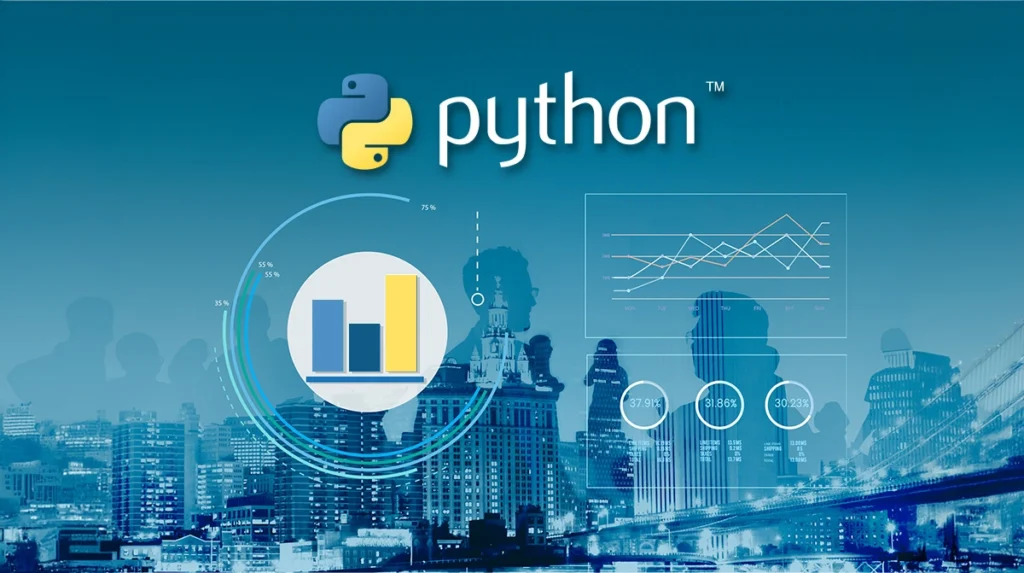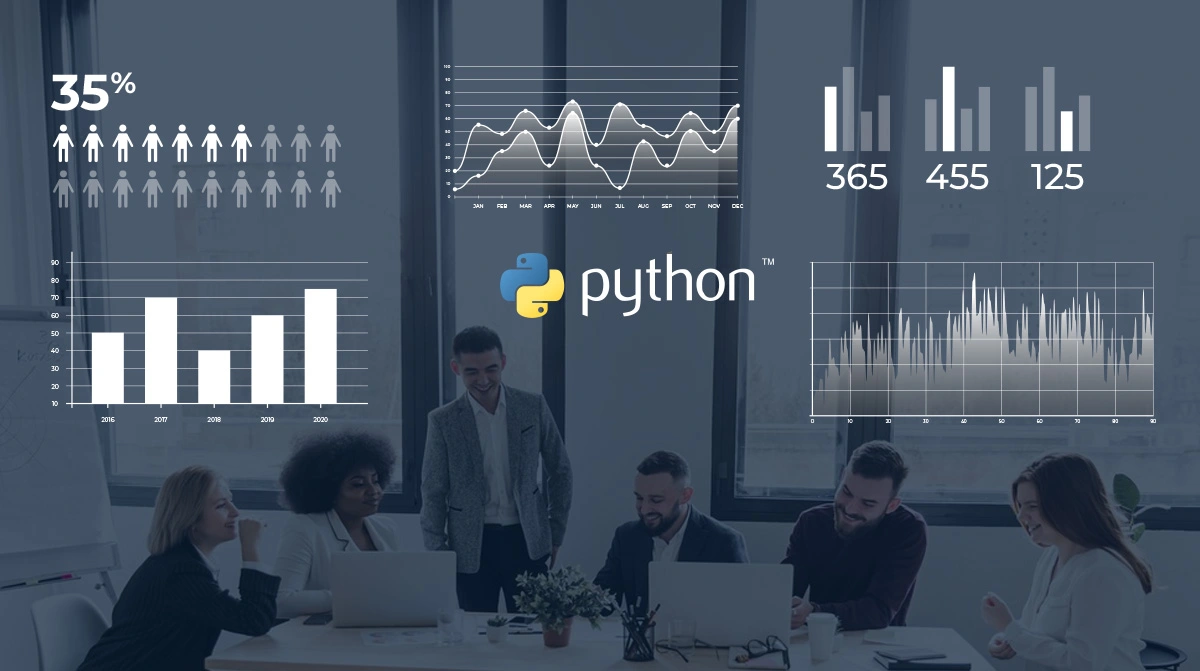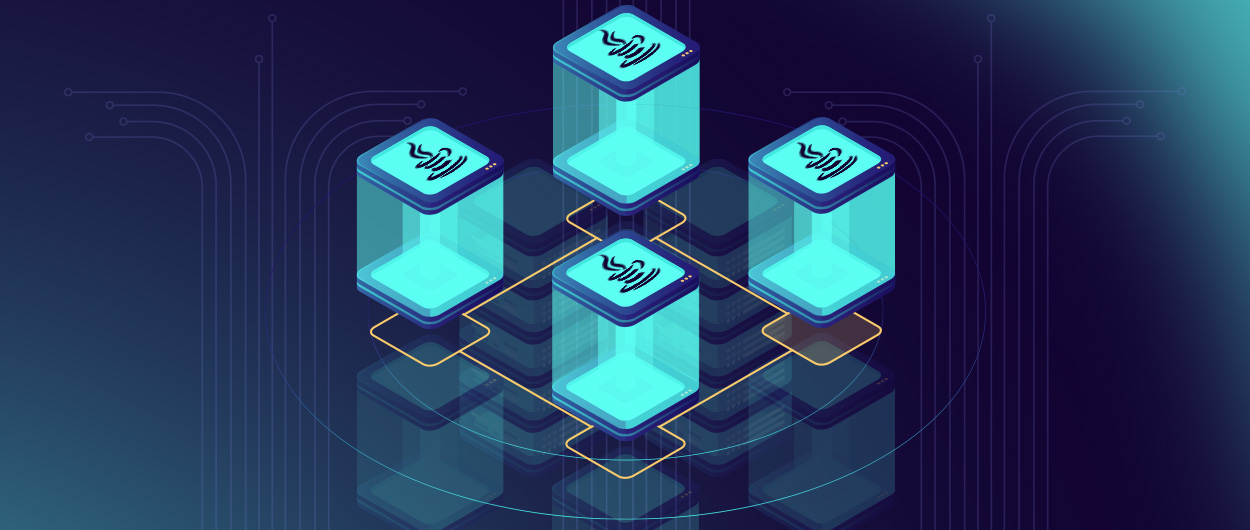Data is the lifeblood of modern businesses. To thrive, organizations need to extract meaningful insights from this vast resource. That’s where Python comes in.
Python’s impact on data analytics is undeniable. It empowers professionals to navigate the complex world of data easily, transforming raw numbers into business intelligence. But what exactly makes Python the language of choice for data gurus?
Let’s delve deeper into its superpowers and explore how it revolutionizes how we approach data-driven decision-making across industries.
Python: The Powerhouse for Data Analytics
Python’s popularity in data analytics stems from its unique simplicity, efficiency, and power combination. Here’s a breakdown:
Python’s Dominance in Numbers:
- The University of Texas at Dallas reported that 75% of data scientists use Python as their primary programming language.
- Python-related job postings have grown by over 450% since 2012, as noted by Indeed.
- Over 2 million GitHub repositories are Python-based, making it the second-largest community on the platform.
- Python is the fastest-growing programming language, according to the PYPL Index.
8 Factors Contributing to Python’s Dominance:
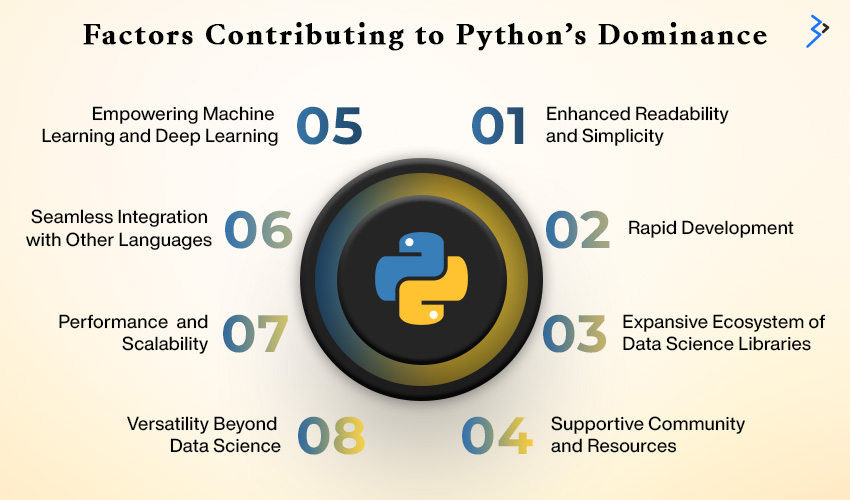
01 | Enhanced Readability and Simplicity
Unlike some programming languages that resemble cryptic codes, Python programming has an intuitive syntax that feels almost natural. This ease of learning helps data analysts focus on the task at hand rather than deciphering complex commands.
02 | Rapid Development
Python’s conciseness and minimal boilerplate code enable rapid development cycles. Data analysts can quickly prototype, test, and iterate on their projects, maximizing efficiency. Partnering with an AEM development services company can further enhance digital experiences by streamlining content management and integration with data-driven solutions.
03 | Expansive Ecosystem of Data Science Libraries
Python’s true strength lies in its diverse ecosystem of specialized Python libraries. Powerhouses like Pandas (data manipulation and analysis), NumPy (numerical computing), and Matplotlib (data visualization) provide a comprehensive toolkit for any data-driven project.
04 | Supportive Community and Resources
The vast and active Python community is a source of invaluable support for data analysts. With countless online forums, tutorials, and documentation readily available, finding answers and tackling challenges becomes a breeze.
05 | Empowering Machine Learning and Deep Learning
Python isn’t just about data analysis; it’s a gateway to the world of artificial intelligence. Python libraries like TensorFlow and scikit-learn provide a robust platform for building and deploying machine learning models, enabling data analysts to extract even deeper insights.
Instagram and Tinder use Python for their user-friendly interface and run machine learning tasks throughout their active AI ecosystem.
06 | Seamless Integration with Other Languages
Python’s ability to interact with other languages, such as C, C++, Java, and R, allows data analysts to leverage the strengths of each language for a truly comprehensive approach.

07 | Performance and Scalability
While often perceived as an easy-to-learn language, Python doesn’t shy away from Big Data challenges. Python libraries like Dask and Vaex are specifically designed to handle massive datasets efficiently.
In fact, Google leverages Python across a diverse range of applications for scalability, automation, AI, and data management.
08 | Versatility Beyond Data Science
Python’s reach extends far beyond data analytics. Its diverse applications include web development, automation, scientific computing, natural language processing (NLP), and even game development. This versatility makes Python a valuable asset for any tech-savvy professional.
Fun fact: Amazon’s web applications, including Amazon Web Services (AWS), are built with Python-based web frameworks.
Unlocking Data Science Potential with 5 Python Development
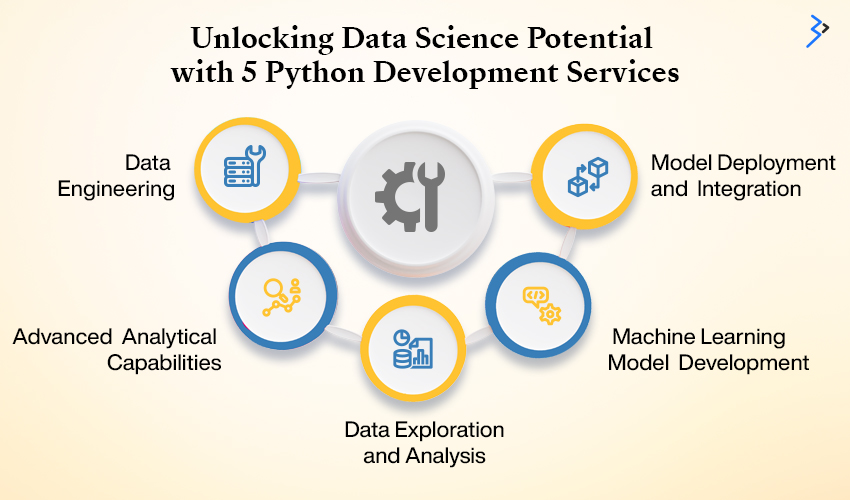
Data analytics is a complex field, and harnessing the full potential of Python requires expertise In Python development to provide a valuable solution, offering a range of benefits:
01 | Data Engineering
Building robust data pipelines, integrating data from various sources, and ensuring data quality are crucial steps in any data analysis project. Python development can streamline these processes, freeing up data analysts to focus on the insights.
Example: A global eCommerce giant can leverage Python to build a scalable data pipeline that efficiently ingests, cleans, and transforms terabytes of sales data daily, enabling real-time insights into customer behavior and inventory management.
02 | Advanced Analytical Capabilities
Custom Python scripts can be developed to handle specific analytical tasks, enabling professionals to delve deeper into complex data structures and uncover hidden patterns.
Example: A financial institution can employ Python to develop custom algorithms for fraud detection, identifying anomalies in transaction patterns that traditional methods missed.
03 | Data Exploration and Analysis
Python’s data manipulation libraries can be customized to create interactive dashboards and reports, allowing analysts to explore data visually and identify trends easily.
Example: A leading retail brand can utilize Python to create interactive dashboards that provide granular insights into sales performance, customer segmentation, and inventory optimization. These dashboards can lead to data-driven decisions that boost revenue.
04 | Machine Learning Model Development
Leveraging Python’s machine learning libraries, developers can build and customize models tailored to specific business needs, transforming data into predictive analysis.
Example: A healthcare provider can build a predictive analysis model using Python to identify patients at risk of chronic diseases, enabling early interventions and improved patient outcomes.
05 | Model Deployment and Integration
Python development can ensure seamless integration of machine learning models into existing workflows and applications, maximizing the impact of your data insights.
Example: A manufacturing company can deploy a Python-based machine learning model to optimize production processes, resulting in significant cost savings and increased efficiency.
The Future of Python in Big Data Analytics
As the volume and complexity of data continue to escalate, Python’s role in data analytics is poised for even greater prominence. Several key trends will shape Python’s future in this domain:
Expanded Capabilities and Integration
- Cloud-Native Python: Deeper integration with cloud platforms like AWS, Azure, and GCP will enable seamless scaling and management of big data workloads.
- Distributed Computing: Python’s ability to handle distributed computing frameworks like Apache Spark will be crucial for processing massive datasets efficiently.
- Real-Time Analytics: Python’s evolving capabilities in handling streaming data will be essential for real-time insights and decision-making.
- Edge Computing: Python’s role in edge computing will grow as data is processed closer to the data source, enabling faster insights and reduced latency.
Enhanced AI and Machine Learning Integration
- AutoML: Python will continue to lead AutoML, making machine learning accessible to a broader audience and accelerating model development.
- Deep Learning Advancements: Python’s popularity in deep learning, coupled with the development of specialized libraries like TensorFlow and PyTorch, will drive innovation in areas like computer vision, natural language processing, and generative AI.
- Explainable AI: Python will be crucial in developing tools and techniques to interpret and explain complex machine learning models, addressing concerns about model transparency and accountability.
Focus on Data Privacy and Security
- Data Governance: Python will be instrumental in developing solutions for data governance, ensuring compliance with data privacy regulations like GDPR and CCPA.
- Data Security: Python’s role in building robust security frameworks will be essential to protect sensitive data from breaches.
New Application Areas
- Internet of Things (IoT): Python’s versatility will enable it to play a key role in processing and analyzing data from IoT devices, driving insights and automation.
- Digital Twins: Python will be used to create digital representations of physical assets, enabling predictive analysis, maintenance, and optimization.
- Life Sciences: Python’s data analysis and machine learning capabilities will be leveraged to accelerate drug discovery, personalized medicine, and healthcare research.
By staying at the forefront of these trends, Python will continue to be the language of choice for data scientists and analysts, empowering organizations to extract maximum value from their data.
FAQs on Python for Data Analytics
01 | What makes Python suitable for data analytics?
Python’s simplicity, readability, and versatility make it an ideal language for data analysis. Its extensive libraries, active community, and ability to handle complex datasets contribute to its popularity. Moreover, Python’s focus on data structures and algorithms aligns perfectly with the core requirements of data analysis, making it a preferred choice for many data professionals.
02 | How can Python be used for statistical analysis?
Python’s powerful libraries, such as NumPy, SciPy, and Statsmodel, can be used for statistical analysis. These libraries provide functions for various statistical tests, hypothesis testing, regression analysis, and more. Python’s ability to handle large datasets efficiently and integrate with data visualization tools makes it a valuable asset for statistical modeling and analysis.
03 | What role does Python play in data visualization?
Python excels at creating compelling visualizations to uncover patterns and trends within data. Libraries like Matplotlib, Plotly, and Seaborn offer varied plotting options, enabling data analysts to create interactive and informative visualizations. Python’s integration with data analysis libraries like Pandas makes it seamless to explore and visualize data effectively.
04 | What are the advanced analytical capabilities offered by Python in data science?
Python’s advanced analytical capabilities in data science include time series analysis, machine learning, and natural language processing. Libraries like Statsmodels, scikit-learn, and NLTK provide the necessary data science tools for these tasks. Python’s flexibility helps data scientists experiment with different algorithms and models, leading to innovative solutions.
05 | How does Python support machine learning in data analytics?
Python has become the official language for machine learning due to its rich ecosystem of libraries like scikit-learn, TensorFlow, and PyTorch. These libraries offer a wide range of algorithms and data science tools for building, training, and deploying machine learning models. Python’s integration with data analysis libraries like Pandas and NumPy makes it a powerful platform for end-to-end machine learning projects.
06 | What are the advantages of using Python for web scraping?
Python’s simplicity and readability, as well as libraries like Beautiful Soup and Scrapy, make it an excellent choice for web scraping. These libraries provide efficient data science tools for extracting data from websites, cleaning it, and storing it in a structured format for further analysis. If you’re looking to scrape Google search in Python, for example, these tools allow you to automate and customize search result collection with ease. Python’s ability to handle large volumes of data and its integration with other data analysis tools make it a preferred language for web scraping projects.
07 | How does Python support data visualization in data science projects?
Python offers a wide range of libraries for creating stunning and informative visualizations. Matplotlib is the foundation for creating basic plots, while Seaborn provides a higher-level interface for more complex visualizations. Python libraries like Plotly and Bokeh enable interactive visualizations, allowing users to explore data dynamically. Python’s integration with data analysis libraries makes creating visualizations directly from data frames easy.
06 | What capabilities does Python offer for natural language processing (NLP)?
Python’s rich ecosystem includes libraries like NLTK, spaCy, and Gensim, which provide tools for text preprocessing, tokenization, stemming, lemmatization, sentiment analysis, named entity recognition, and more. Python’s ability to handle unstructured text data and extract meaningful insights makes it a powerful language for NLP applications.
07 | How can Python be used for time series analysis?
Python offers libraries like Statsmodels and pandas that provide functionalities for time series analysis. These libraries enable data cleaning, exploratory analysis, forecasting, and model evaluation tasks. Python’s ability to handle time-indexed data and its integration with visualization tools make it valuable for time series analysis.
08 | Why is interactive computing important in Python for data analytics?
Interactive computing in Python, facilitated by tools like Jupyter Notebook, helps data analysts explore data, test hypotheses, and visualize results iteratively. It promotes experimentation and rapid prototyping, leading to faster insights and improved decision-making. Python’s interactive nature makes it an ideal data exploration and analysis language.
09 | How does Python integrate with databases and APIs in data analytics?
Python seamlessly integrates with various databases, such as SQL, NoSQL, and cloud-based databases, through libraries like SQLAlchemy, PyMySQL, and Pymongo. It also provides robust support for interacting with APIs through libraries like requests and Urllib. This integration allows data analysts to access and manipulate data from different sources, enriching their analysis.
10 | Why is Python so popular in data science and analytics?
Python’s combination of readability, versatility, and a vast ecosystem of libraries makes it the preferred choice for data scientists and analysts. Its ability to handle diverse data types, perform complex calculations, and create insightful visualizations, coupled with its active community and extensive resources, has solidified Python’s position as the leading language for data-driven insights.
Related Articles
-
Exploring Python’s Leading Role in Data Analytics and Its Key Advantages
In the era of data-driven decision-making, Python has emerged as a game-changer in data analytics. Its versatile libraries and robust capabilities transform how industries approach data, making it an indispensable
-
Top Reasons Why Full-Stack Developers Can Help SMBs
Over the years, a lot has been spoken, written, and heard about full-stack developers. A full-stack developer is a professional who is well-versed with the Full-stack development process of an
-
A Guide to Selecting the Best Java Framework for Your Microservices
Java is a programming language framework for web development which was first introduced in 1995. It is a flexible framework with multiple varieties that can be used for microservices. It

